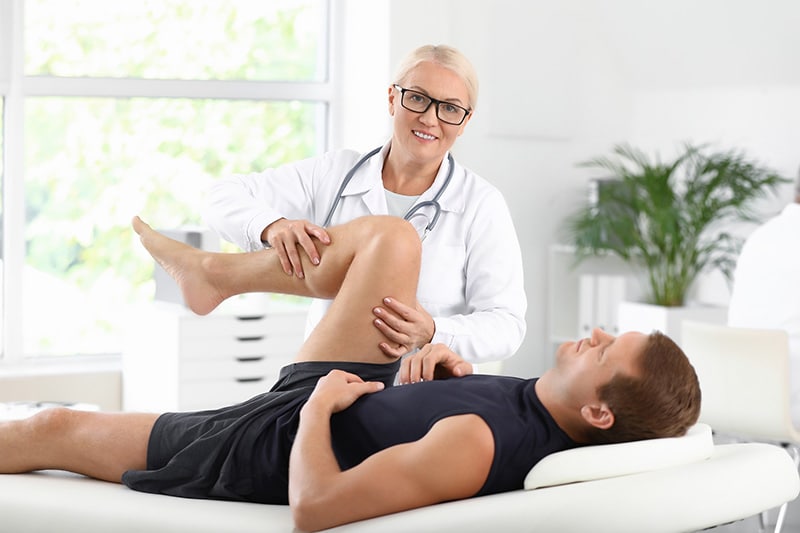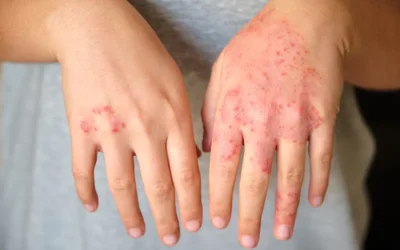Knee buckling or knee giving away refers to the sensation of the knee twisting or giving way when doing basic activities or during sports or dance. It is a symptom of knee instability and the condition is more common in older adults and may increase the risk of falling. Falls can increase the risk of injury or fractures. Common symptoms of knee buckling include pain and swelling in the knee, falling, popping sounds in knee, difficulty walking etc.
A physical therapist or orthopedic specialist designs exercise programs usually focused on improving the range of motion in the upper and lower legs and strengthening the muscles that support the proper alignment of knee and kneecap. Knee surgery may be recommended, if non-surgical solutions such as physical therapy and medications fail to work. Physical therapy medical billing services provided by experienced companies can assist practices to submit claims on- time with accurate medical codes.
ICD-10 Codes for Knee Instability
Unstable knee can be reported using codes such as –
- M23.5 Chronic instability of knee
- M23.50 …… unspecified knee
- M23.51 …… right knee
- M23.52 …… left knee
- M25.36 Other instability, knee
- M25.361 Other instability, right knee
- M25.362 Other instability, left knee
- M25.369 Other instability, unspecified knee
Coding the Common Causes of Knee Buckling
Some of the common causes of knee buckling are:
Arthritis
Arthritis can often result in severe pain and knee instability, which can be the result of injury or worn cartilage. Older individuals with knee pain and knee osteoarthritis may also suffer balance difficulties.
- M17 Osteoarthritis of knee
- M17.0 Bilateral primary osteoarthritis of knee
- M17.1 Unilateral primary osteoarthritis of knee
- M17.10 Unilateral primary osteoarthritis, unspecified knee
- M17.11 Unilateral primary osteoarthritis, right knee
- M17.12 Unilateral primary osteoarthritis, left knee
- M17.2 Bilateral post-traumatic osteoarthritis of knee
- M17.3 Unilateral post-traumatic osteoarthritis of knee
- M17.30 Unilateral post-traumatic osteoarthritis, unspecified knee
- M17.31 Unilateral post-traumatic osteoarthritis, right knee
- M17.32 Unilateral post-traumatic osteoarthritis, left knee
- M17.4 Other bilateral secondary osteoarthritis of knee
Knee injuries
Tearing a ligament or a fragment of bone or cartilage between the knee joints may lead to severe pain and knee instability. Common knee injuries such as ACL tears or meniscus tears can worsen the pain and cause swelling in addition to instability.
- S83.51 Sprain of anterior cruciate ligament of knee
- S83.511 Sprain of anterior cruciate ligament of right knee
- S83.512 Sprain of anterior cruciate ligament of left knee
- S83.519 Sprain of anterior cruciate ligament of unspecified knee
- S83.52 Sprain of posterior cruciate ligament of knee
- S83.521 Sprain of posterior cruciate ligament of right knee
- S83.522 Sprain of posterior cruciate ligament of left knee
- S83.529 Sprain of posterior cruciate ligament of unspecified knee
Dislocation of the kneecap
Partial or complete dislocation of the kneecap or misalignment will cause pain, deformity of the knee joint and instability. Partial dislocation of the kneecap is also referred to as patellar subluxation and the common symptoms for this condition are pain and swelling, painful pop in the knee and lack of ability to straighten the leg.
- M22.0 Recurrent dislocation of patella
- M22.1 Recurrent subluxation of patella
- M22.2 Patellofemoral disorders
- M22.2X Patellofemoral disorders
- M22.2X1 …… right knee
- M22.2X2 …… left knee
- M22.2X9 …… unspecified knee
- M22.2X Patellofemoral disorders
Inflammation
Inflammation of knee joint or knee bursitis affects small fluid-filled sac (bursa) near the knee joint. The condition most commonly occurs either over the kneecap or on the inner side or synovial folds of the knee below the joint, and can limit mobility and cause the knee to pop or buckle.
- M70.4 Prepatellar bursitis
- M70.40 …… unspecified knee
- M70.41 …… right knee
- M70.42 …… left knee
- M70.5 Other bursitis of knee
- M70.50 …… unspecified knee
- M70.51 …… right knee
- M70.52 …… left knee
Multiple Sclerosis
An autoimmune condition, multiple sclerosis attacks the central nervous system and may disrupt communication between the brain and the body. Along with balance and sensory issues, the condition may cause muscle weakness and tightness, which may contribute to knee instability.
- G35 Multiple Sclerosis
Femoral Nerve Neuropathy
It is the femoral nerve which controls the muscles that straighten the leg. Dysfunction of femoral nerve or femoral neuropathy may cause pain, burning and numbness in the thigh area or lower leg and may weaken the knees, making them prone to buckling or the knee giving way.
- G57.2 Lesion of femoral nerve
- G57.20 …… unspecified lower limb
- G57.21 …… right lower limb
- G57.22 …… left lower limb
- G57.23 …… bilateral lower limbs
To treat the condition and its causes, knee rehabilitation programs will be recommended to help the patient improve her ability to bend and straighten the legs and build strength in inner and outer thighs, and thus expand the range of motion. Treatment options may include Rest, Ice, Compression, and Elevation (RICE), Nonsteroidal anti-inflammatory drugs (NSAIDs), Physical therapy, Prescription medications or surgery. Following a healthy lifestyle such as losing weight and using canes or other devices to assist in walking can help manage knee buckling. Practices providing treatment for such knee conditions can take support from experienced medical billing companies to report the diagnosis and treatments provided, and submit claims for on-time reimbursement.
Related blogs:




